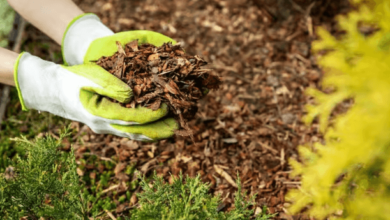Emergency Lawn Care Services: Managing Unexpected Challenges

When maintaining a lush, green lawn, homeowners often face unexpected challenges that require immediate attention. From sudden weather changes to pest infestations or irrigation issues, these emergencies can threaten the health and appearance of your yard. We will explore practical strategies for emergency lawn care situations, ensuring your lawn remains vibrant and healthy throughout the year.
Identifying Common Emergencies
In lawn care, emergencies can manifest in various forms, each demanding swift action to mitigate damage and restore vitality to the turf. One prevalent issue is sudden weather extremes, such as severe storms or prolonged droughts. These conditions can quickly turn a thriving lawn into a parched or flooded landscape, stressing grass and compromising health.
Responding to Weather-Related Challenges
When faced with weather-related emergencies, prompt response is crucial. For instance, during periods of drought, watering restrictions may necessitate adjusting irrigation schedules or implementing targeted watering techniques to ensure grassroots receive adequate moisture. Conversely, addressing drainage issues promptly after heavy rains can prevent waterlogging and fungal growth, preserving the integrity of the turf.
Dealing with Pest Infestations
Another pressing concern in Northern Ohio Lawn care service is pest infestations. Insects like grubs, chinchbugs, or armyworms can quickly devastate a lawn if left unchecked, causing visible damage and weakening grass. Identifying the specific pest and employing appropriate control measures, whether biological, chemical, or cultural, is essential to prevent widespread destruction and promote recovery.
Managing Turf Diseases
Turf diseases pose yet another challenge requiring immediate attention. Conditions such as brown patches, dollar spots, or powdery mildew can spread rapidly under favorable environmental conditions, jeopardizing the health of your lawn. Cultural practices like proper mowing height, adequate air circulation, and timely fertilization can bolster grass resistance to diseases, reducing the likelihood and severity of outbreaks.
Equipment Malfunctions and Repairs
Beyond natural and biological challenges, equipment malfunctions can also constitute emergencies in lawn care. Issues with lawnmowers, trimmers, or irrigation systems can disrupt regular maintenance routines, affecting the overall health and appearance of the lawn. Routine inspection, maintenance, and timely equipment repairs are essential to minimize downtime and ensure efficient operation during critical periods.
Engaging Professional Services
When emergencies exceed your expertise or available time, engaging professional lawn care services can provide timely solutions and peace of mind. Lawn care professionals possess the knowledge, tools, and experience to effectively diagnose and address a wide range of emergencies. Their expertise extends to pest management, irrigation system repairs, turf restoration, and ongoing maintenance tailored to your lawn’s needs.
Implementing Preventive Measures
Preventing emergencies before they occur is often the most effective strategy for maintaining a healthy lawn. Regular maintenance practices, such as proper mowing techniques, appropriate fertilization schedules, and adequate irrigation management, create optimal grass growth and resilience conditions. Conducting soil tests periodically to assess nutrient levels and pH balance can further preempt potential issues, allowing for timely adjustments to promote robust turf health and minimize vulnerabilities.
Creating an Emergency Response Plan
Developing an emergency response plan tailored to your lawn’s specific needs can streamline actions during crises. This plan should include contact information for local lawn care professionals, suppliers of pest control products, and irrigation system repair services. Additionally, familiarize yourself with common lawn pests and diseases in your region and effective treatment options to expedite decision-making and mitigate damage when emergencies arise.
Monitoring and Assessing Recovery
After addressing an emergency, ongoing monitoring and assessment are essential to gauge the effectiveness of interventions and track the lawn’s recovery progress. Observe grass color, density, and overall health regularly to identify any lingering issues or signs of new challenges. Adjust maintenance practices based on seasonal changes, weather patterns, and the lawn’s response to treatments to sustain long-term vitality and aesthetic appeal.
Read also: wellhealthorganic.com:lemon-juice-know-home-remedies-easily-remove-dark-spots
Utilizing Sustainable Lawn Care Practices
In addition to addressing emergencies, incorporating sustainable lawn care practices can enhance your landscape’s resilience and environmental sustainability. Practices such as mulching grass clippings to return nutrients to the soil, using organic fertilizers to promote soil health, and planting native grass species well-adapted to local conditions can reduce the need for chemical interventions and support long-term lawn vitality. By adopting a holistic approach to lawn care that balances immediate needs with sustainable practices, homeowners can foster a thriving lawn that benefits both the environment and their property’s aesthetic appeal.
Maintaining a vibrant and resilient lawn requires proactive measures, sustainable practices, and prompt responses to unexpected challenges. Homeowners can effectively manage emergencies and sustain optimal lawn health throughout the year by implementing preventive practices, creating an emergency response plan, monitoring recovery efforts diligently, and adopting sustainable lawn care practices. Remember, a healthy lawn enhances your property’s curb appeal and provides a welcoming outdoor environment for relaxation and recreation. With preparedness, diligence, and a commitment to sustainability, you can enjoy a lush, green lawn that thrives despite unforeseen disruptions.




